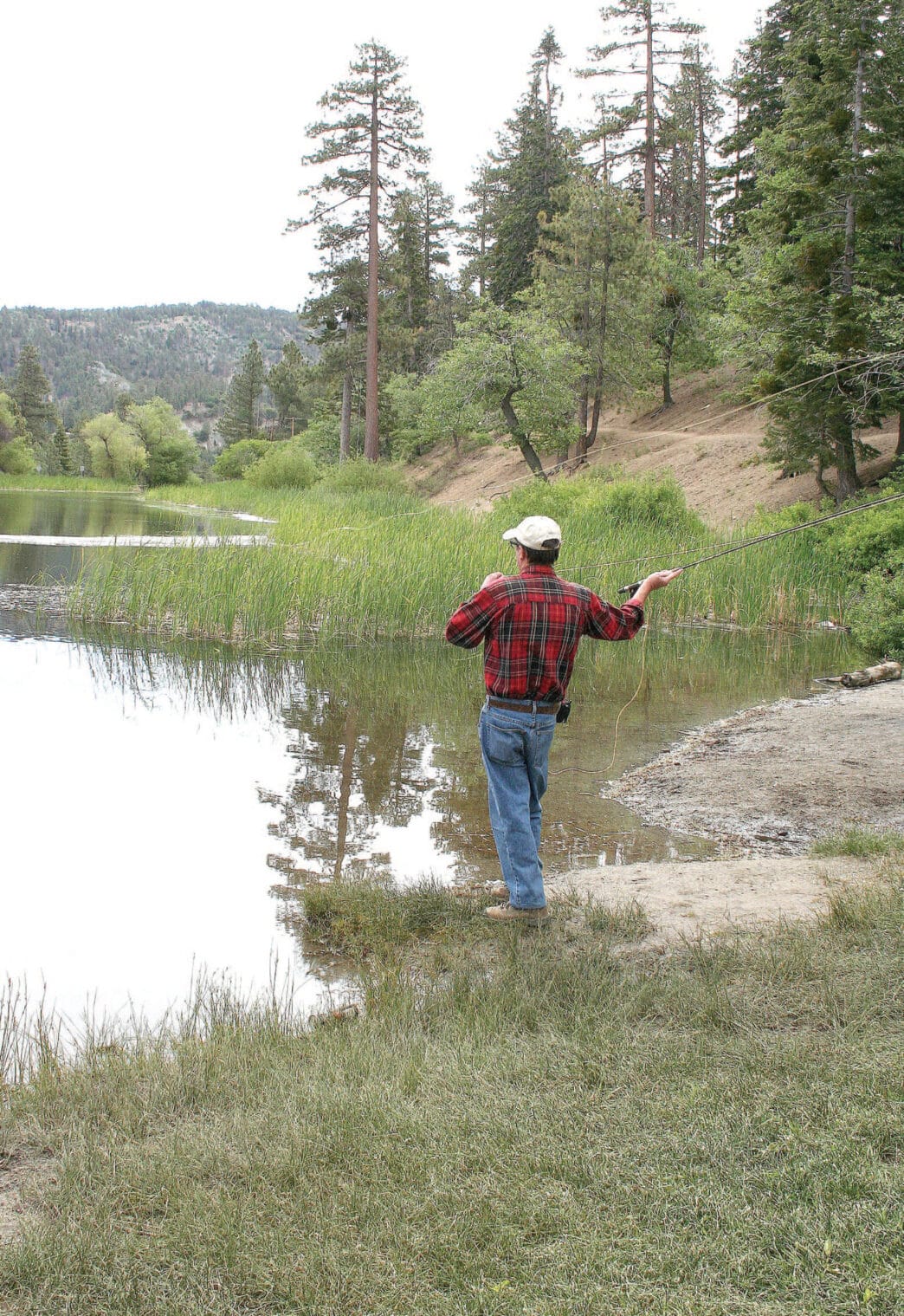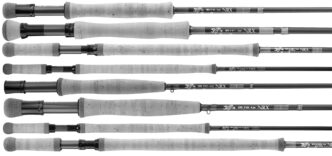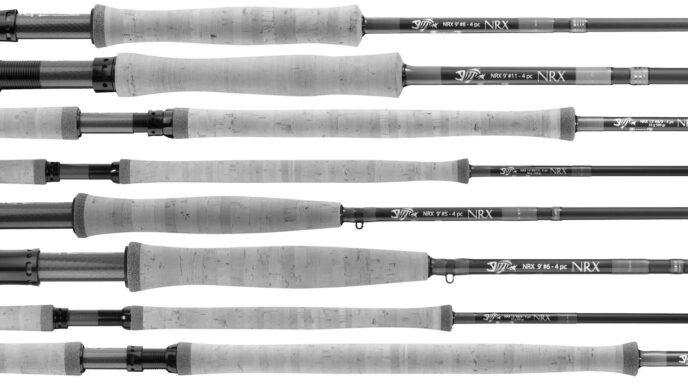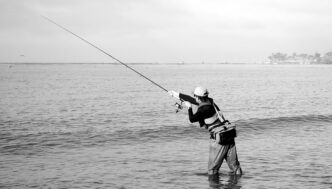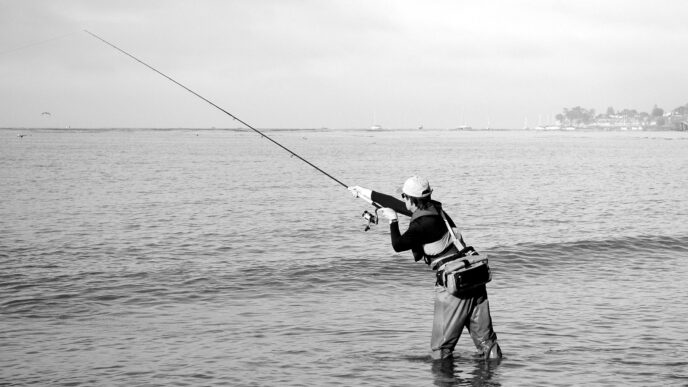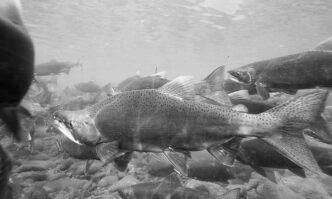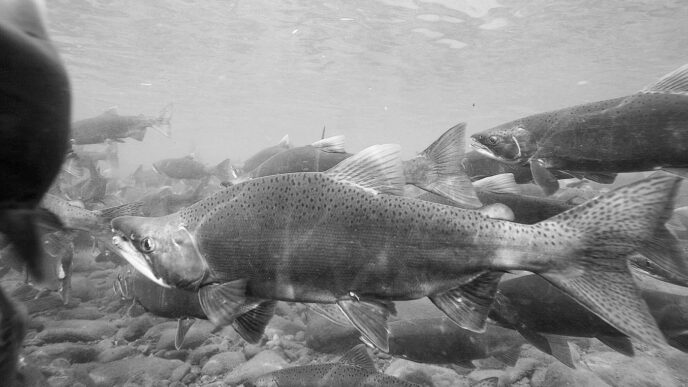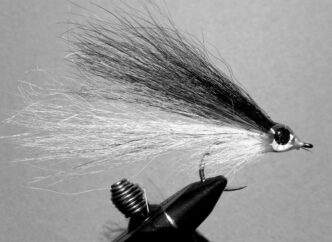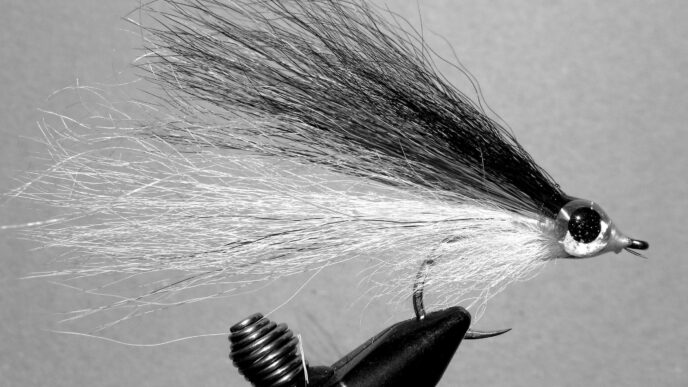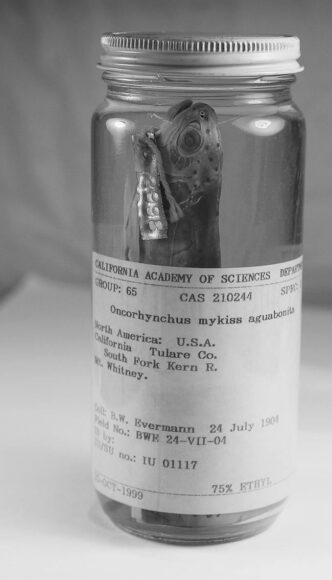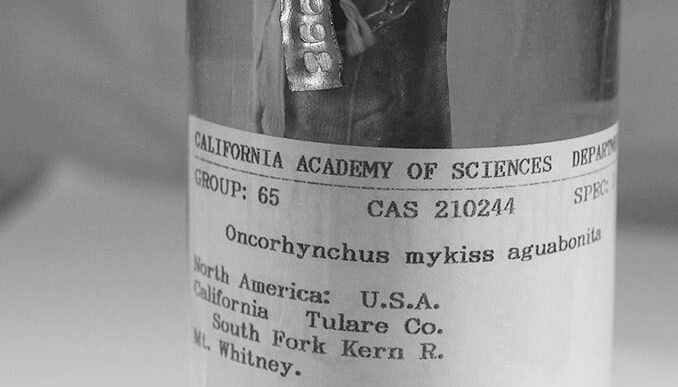Winter, for the fly angler, can be a time of stress. The weather is often uncertain. Scheduling a long weekend road trip and outing to the Owens River in the eastern Sierra is fraught with possibilities, but some of them are ugly. It can be almost springlike in Bishop in January, making a morning on the lower Owens a delight, or you can get caught in blowing snow and subfreezing winds that make casting a fly on this storied river a pain, even life-threatening. Spending much of the morning in a comfortable Bishop restaurant having breakfast, while enjoyable, is not the reason you drove all that way.
Much the same holds true for the trout waters closer to home that populate the mountain ranges circling the Los Angeles Basin. You might find your local stream open and inviting, but the chances are equally good that there will be snow and ice, and roads will be either closed or clogged with traffic caused by skiers and snowboarders. The situation isn’t any better on mountain lakes. Even large waters like Lake Hemet and Big Bear Lake are often frozen over or nearly so, and the fun just isn’t there to be had.
On the other hand, some local lower-altitude waters are easily accessible, swarming with trout, and have at least fair weather conditions most of the time. Down in the valleys and the cities, you can often fish in shirtsleeves in January from midmorning on, and I’ve even seen some hardy souls casting a fly rod in the middle of the winter while wearing shorts.
I’m talking about all those county and city park ponds operated by the various public agencies that dot the landscape in Southern California. These waters offer both delights and drawbacks. First, the good news. If you reside in Southern California, there is probably at least one such water within comfortable driving distance of where you live. They are usually open on weekends, and in the winter, they are less crowded than you might find in the summer months. Drawbacks include most of the ills that come with public places in cities. I won’t go into details, but some of these I wouldn’t fish at night, even if it were warm enough.
Yes, I know these waters exist as trout fisheries solely on the premise that as temperatures plunge in winter, they get cool enough for the state or county to stock hatchery-raised rainbow trout for both sport and consumption by a whole bunch of folks who don’t necessarily fly fish — in fact, you’ll probably get odd looks from people in these parks who’ve never seen anybody cast a fly rod. Be prepared for amused glances and sometimes outright laughter at the sight of an angler with a fly rod getting in there among the bait-and-lure tossers.
You could simply write these places off, thinking that you really don’t want to fish for planted trout — this despite the fact that many of your favorite angling destinations in the Sierra are also populated with stocked fish. You could stay home and sulk, or you could drive to one of these parks and have a day of inexpensive fun — and catch a few fish, to boot.
City and county waters (plus a few private waters open to the public for a fee) are scattered all over Southern California. This article will discuss some of the major ones and list a few of the smaller ones, with emphasis on the urban Los Angeles area and surrounding communities.
How to Fish for Park Pond Trout
First, not all of these park waters are tiny. One destination that isn’t is the lake in Frank G. Bonelli Park, near the intersection of the 57 and 10 freeways. Part of the Los Angeles County Parks system, it is also known as Puddingstone Reservoir. With 250 surface acres, it is best fished with a boat or float tube. By contrast, tiny Jackson Lake is just 7 acres in size (al-though listed as being in Los Angeles County, it’s probably a hundred miles from downtown by road and high in the Angeles National Forest near the ski resort of Wrightwood). Many other park waters, however, are larger than 30 surface acres and several are over 75 acres, making these respectable destinations for winter angling.
On the larger waters, a 6-weight rod is not too large, and if your are going to be fishing from a float tube or kayak, you’ll probably want at least an 8-foot rod, with a 9-footer possibly a better choice. On the really small park ponds, you can break out your treasured 3-weight and have at it. I’ve prospected park ponds for decades, using a variety of rod and line combinations, and in the last few years have more or less settled on a 7-foot rod casting a 5-weight line for trout and small bass and panfish. If I am float tubing or boat fishing, I upgrade to a 9-foot 6-weight.
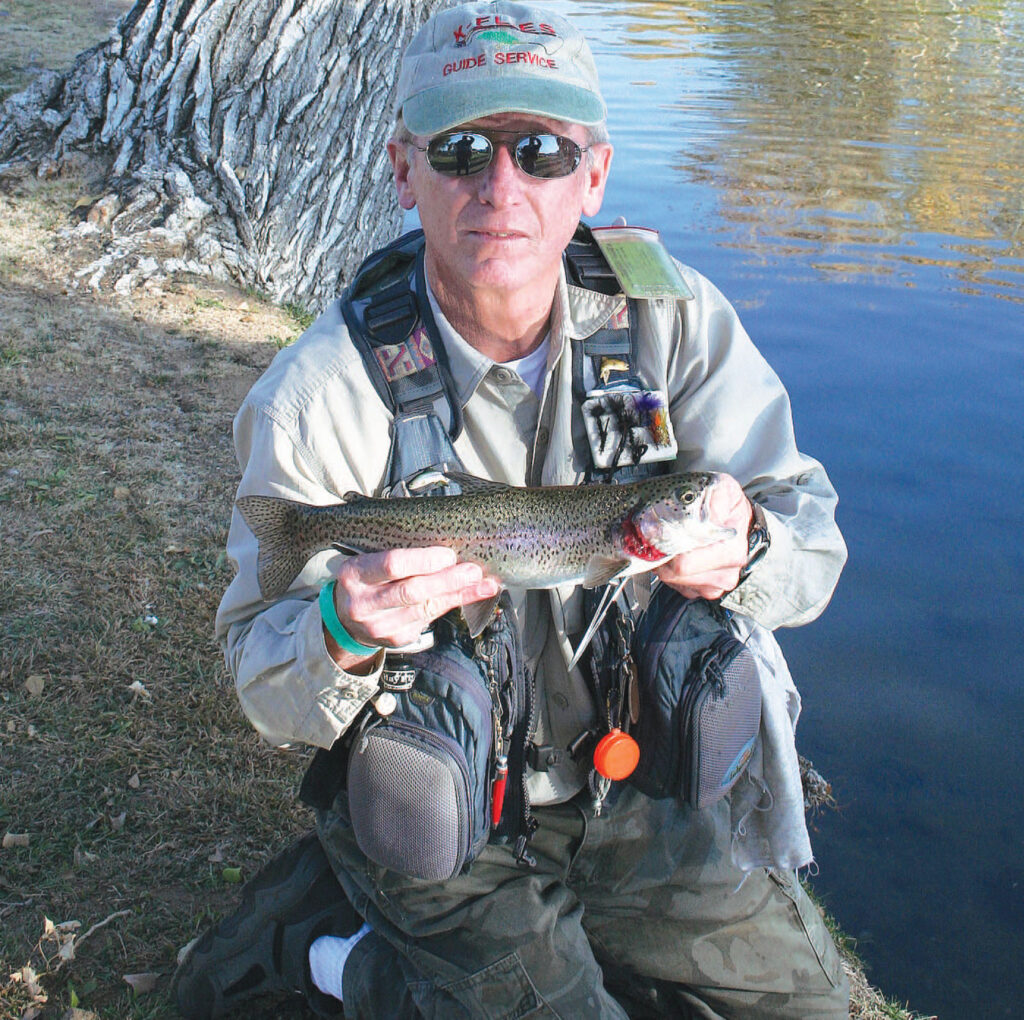
Most park ponds, however, are too small for tube or boat angling, and virtually all prohibit wading, so strolling the bank and fishing in the relative comfort of street shoes or light hiking boots is one of the attractions. You can even leave your vest in the car. I sometimes fish small ponds with just a small box of flies stuffed in a shirt pocket, along with a pair of clippers and one or two tippet spools. It’s enough to keep me going.
Fly selection for winter fishing in the Southland is pretty simple. Forget the dry flies; the chances of seeing any kind of surface activity, even in the best of Southern California winter weather, is quite small. Later in the winter, say around the end of February, you might spot hatching midges and other insects. I know that fly anglers who frequent Laguna Niguel Park in Orange County take some serious winter trout by fishing midges the way they are fished on Lake Crowley — with indicators and long leaders. For the most part, though, you will either be imitating subsurface insect life or simply using attractor patterns. As a matter of practical fact, you can fish most park ponds of any size with something like a Woolly Bugger all day long and never feel you’ve selected the wrong fly for the situation.
Dark Woolly Buggers with a bit of flash seem to work best, and beadhead patterns are probably better overall, because the bead adds both weight and flash. Black, dark olive, or rusty brown produce hits for me on most of these waters. It’s the movement and a bit of flash that seems to draw the most attention from the trout. I have fished all-white Woolly buggers (mostly on waters that have threadfin shad) with some success, but for the most part, I stick to subdued colors. One light-colored fly that does work at times is a Hornberg. It looks like a little shad or perch minnow, I suspect, and it is well received by trout fresh from the hatchery truck.
Big, shaggy nymphs also draw strikes. I doubt these flies match any real insect in the mind of a hatchery trout, but they provide the same visual keys as the Woolly Bugger. A dark brown, olive, or black nymph will almost always work. I know a guy who has harvested huge trout at a local pay-to-play water than routinely stocks trout over 10 pounds. He swears by a huge Bitch Creek Nymph, size 4, with long, wiggly rubber legs. Another productive fly is any sort of buggy-looking leech pattern. A few years ago, while writing about trout fishing at Big Bear Lake in the San Bernardino Mountains (definitely not a park pond), I mentioned a fly fished by local guide Keith Kern. Called Keith’s Bottom Bouncer, it’s pretty much a Woolly Bugger tied on a 90-degree jig hook and weighted. This is another excellent pattern for winter pond trout.
Leaders should be fairly long and reasonably light. For the most part, you will be casting to trout averaging around 9 to 10 inches in length. Tippets of 4X or even 5X work quite well. If you are fishing one of the lakes that stocks larger trout, rethink leaders to avoid being broken off almost instantly. I’m not sure you need fluorocarbon tippets, because hatchery trout are not particularly leader shy, but it wouldn’t hurt to bring a spool or two of fluoro.
The Pick of the Litter
If you go to the California Department of Fish and Game website at www.dfg.ca.gov, you can click on a link that will show you lists, by county, of all the waters in the state that have been approved for the stocking of catchable and fingerling trout. The latest version was uploaded in early August and is pretty complete. You can also do a search of the site for “county parks”, and “regional parks” and get additional information regarding winter trout waters close to home.
In the greater Los Angeles area, there are many dozens of parks. A number of these have park ponds open to winter fishing. I’d like to tell you it’s easy to jump on the Internet and look up these parks, but good luck with that. For Los Angeles County, a Google search for “LA County Parks Fishing” will show you links to you can check out for several parks, including Castaic Lake. This impoundment is in a regional park, and with a size that exceeds 2,000 surface acres, it isn’t a pond. However, it offers pretty good fishing. Even better for the winter fly angler is the much smaller forebay known as Castaic Lagoon (although still large at 180 surface acres). You can shore fish or float tube this area, which receives hatchery trout and also holds a population of very large Floridastrain bass that eat the trout. It’s not unheard of for a fly angler casting a Woolly Bugger for trout to have his tippet abruptly snapped by a huge bass.
Already mentioned is Puddingstone Lake in Bonelli Park — a pretty fair destination for fly anglers. You can tube, boat, or shore fish this decent-sized lake. Others in Los Angeles County include Legg Lake, inside the Whittier Narrows Recreation Area, the Santa Fe Dam Recreation Area in Irwindale, and the Peck Road Water Conservation Park in Arcadia. Smaller parks with stocked ponds are the Kenneth Hahn Recreation Area in Baldwin Hills, Apollo Park in Lancaster, Alondra Park in Lawndale, the Earvin “Magic” Johnson Recreation Area in Willowbrook, Cerritos Park in Cerritos, La Mirada Park in La Mirada, and Belvedere Park in East L.A.
Over the years, I’ve fished Legg Lake, Puddingstone, Castaic Lagoon, and the Santa Fe Dam Recreation Area. The others are listed as receiving stocks of trout in the winter, but I’ve had no experience with them. It would be a wise idea to research these lakes on the Internet and contact them before heading there to fish.
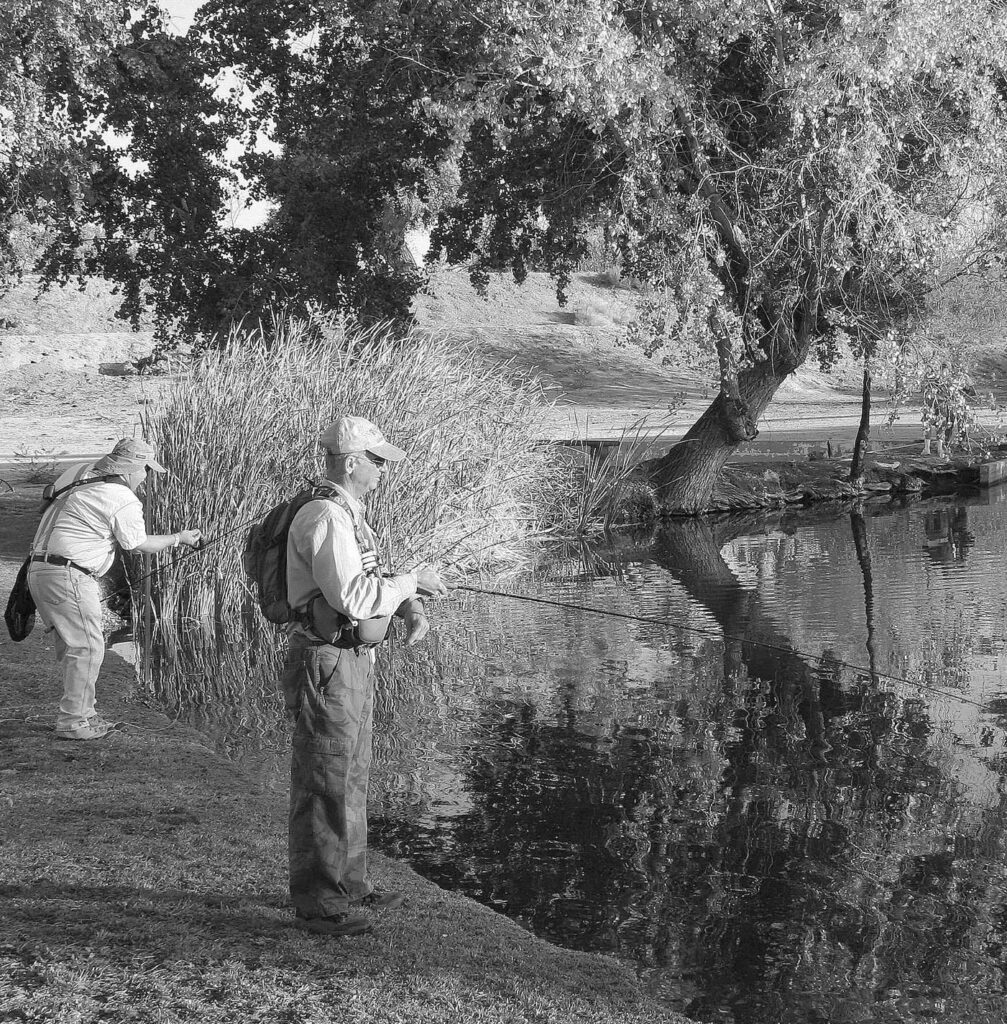
In neighboring Orange County, the premium park lake is Laguna Niguel. A 44-surface-acre pond in the park of the same name, it has a reputation for big trout in the winter and for fair-to-good angling for bass and panfish in the summer. Also open is Irvine Lake. While not a county or city park, it is a 660 surface-acre reservoir that, like Laguna Niguel, offers float tube angling for trout in the winter and for bass and panfish in the summer. Santa Ana River Lake is smaller, but is included in this article simply because it offers winter trout angling. Like the other two, it charges a pretty stiff fee for fishing, but does not allow float tubes and is usually overwhelmed with bait anglers.
To the east of Los Angeles, in the counties of Riverside and San Bernardino (the two largest in California, but each mostly desert), there are also a number of winter fishing opportunities close to urban centers. The Riverside regional park system includes such interesting fisheries as 1,100-surface-acre Lake Skinner near Winchester and tiny (3-acre) Rancho Jurupa Park in West Riverside. The San Bernardino Regional Parks have more to offer, ranging from Mojave Narrows, well out in the Mojave Desert in Victorville, to Lake Gregory, which is high enough in altitude to be a poor fishery in winter, except during stretches of warm weather. Gregory is much better suited to summer trout angling. The parks at Glen Helen and Yucaipa do offer decent winter trout angling, although like most county and city parks, they get a rush of lure-and-bait anglers following each trout stocking. It could be a lot worse. Some of these close-to-home waters offer really decent trout angling for stocked fish during a period of time when our favorite waters are mostly frozen over or blanketed in snow. You might not be able to enjoy a wilderness experience at one of these park ponds, but hey, you’re outdoors and fishing, rather than cooped up in the house.
If You Go…
The fastest way to get a handle on where you can locate suitable trout-holding waters in and around Southern California’s major cities is to check the California Department of Fish and Game website at http://www.dfg.ca.gov. Click on the link to Regions, and check out Region 5, South Coast, and Region 6, Inland. Look at their fish-planting schedule for the latest information on where and approximately when trout will be stocked. You can also get quite a bit of information off the Web with searches for fishing sites that have blogs and message boards with a lot of chat about local fishing conditions. For the various county park systems, just do a quick search for “county parks” or “regional parks.”
For printed information, it is a shame you can no longer buy Hershell Whitmer’s Lake Recreation in Southern California. My much-read copy is more than 10 years old, but still valuable (you might try to locate one on Amazon.com or a used book website like AbeBooks.com). Currently the best reference guide to lake fishing over the entire state is Recreation Lakes of California, by Jake and Diane Dirksen (Recreation Sales Publishing, $19.95). This is now it its fifteenth edition. You can find it in tackle shops or online at Amazon.com, among other retailers.
Richard Alden Bean




